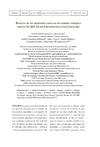Please use this identifier to cite or link to this item:
https://accedacris.ulpgc.es/jspui/handle/10553/73089
| DC Field | Value | Language |
|---|---|---|
| dc.contributor.author | Martín González, Esther | en_US |
| dc.contributor.author | Galindo Jiménez, Inés | en_US |
| dc.contributor.author | Mangas Viñuela, José | en_US |
| dc.contributor.author | Romero Ruiz, Carmen | en_US |
| dc.contributor.author | Sánchez Jiménez, Nieves | en_US |
| dc.contributor.author | González Rodríguez, Alberto | en_US |
| dc.contributor.author | Coello Bravo, Juan Jesús | en_US |
| dc.contributor.author | Márquez, Alvaro | en_US |
| dc.contributor.author | Vera, Alejandro de | en_US |
| dc.contributor.author | Vegas Salamanca, Juana | en_US |
| dc.contributor.author | Melo, Carlos | en_US |
| dc.date.accessioned | 2020-06-08T14:01:54Z | - |
| dc.date.available | 2020-06-08T14:01:54Z | - |
| dc.date.issued | 2019 | en_US |
| dc.identifier.issn | 0210-945X | en_US |
| dc.identifier.other | Dialnet | - |
| dc.identifier.uri | https://accedacris.ulpgc.es/handle/10553/73089 | - |
| dc.description.abstract | Los afloramientos fosilíferos son puertas doradas para el estudio de los eventos sucedidos en el pasado. El Cuaternario es un período marcado por varios eventos glaciales e interglaciales, que conllevan oscilaciones del nivel del mar. El último período interglaciar, con el intervalo más cálido entre ~ 128 ka a ~ 116 ka (etapa isotópica marina 5e, MIS 5e) tuvo una temperatura global media de 2ºC por encima de la actual, lo que resultó en un nivel medio del mar de aproximadamente 8,67 m más alto que ahora. Actualmente, la isla de Fuerteventura posee un registro fosilífero extenso y bien conservado que exige ser estudiado y preservado. Como parte del Proyecto ECLIPSA, que tiene como objetivo estudiar las evidencias de los cambios climáticos ocurridos en las Islas Canarias, se realizó una campaña de campo en la isla de Fuerteventura, presentándose ahora los resultados preliminares, así como una compilación de trabajos previos sobre los afloramientos de esta isla. | en_US |
| dc.description.abstract | Fossiliferous outcrops are golden gates for the study of past events. The Quaternary is a period marked by several oscillations of the sea level, resulting in several glacial and interglacial events. The Last Interglacial period, with the warmest interval occurring between ~128 ka to ~116 ka (Marine Isotopic Stage 5e (MIS 5e) had a mean global temperature 2ºC higher than today, resulting in a mean sea level (msl) ~8.67 m above presents msl. Fuerteventura Island holds an extensive and well preserved fossiliferous record that urges to be studied and preserved. As part of Project ECLIPSA, that aims to study field evidences of past climates changes in the Canary islands, a survey has been preformed in Fuerteventura Island, being now presented the preliminary results, as well a complilation of previous works regarding the outcrops from this island. | en_US |
| dc.language | spa | en_US |
| dc.publisher | Cabildo Insular de Tenerife | |
| dc.relation.ispartof | Vieraea: Folia Scientarum Biologicarum Canariensium | en_US |
| dc.source | Vieraea: Folia Scientarum Biologicarum Canariensium [ISSN 0210-945X], v. 46, p. 667-688 | en_US |
| dc.subject | 250601 Geología regional | en_US |
| dc.subject.other | Canary Islands | en_US |
| dc.subject.other | MIS 5e | en_US |
| dc.subject.other | moluscos | en_US |
| dc.subject.other | patrimonio | en_US |
| dc.subject.other | Fuerteventura | en_US |
| dc.subject.other | molluscs | en_US |
| dc.subject.other | heritage | en_US |
| dc.title | Revisión de los depósitos costeros del estadio isotópico marino 5e (MIS 5e) de Fuerteventura (islas Canarias) | en_US |
| dc.type | info:eu-repo/semantics/Article | en_US |
| dc.type | Article | en_US |
| dc.identifier.url | http://dialnet.unirioja.es/servlet/articulo?codigo=7241830 | - |
| dc.description.lastpage | 688 | en_US |
| dc.identifier.issue | 46 | - |
| dc.description.firstpage | 667 | en_US |
| dc.investigacion | Ciencias | en_US |
| dc.type2 | Artículo | en_US |
| dc.contributor.authordialnetid | No ID | - |
| dc.contributor.authordialnetid | No ID | - |
| dc.contributor.authordialnetid | 964784 | - |
| dc.contributor.authordialnetid | No ID | - |
| dc.contributor.authordialnetid | No ID | - |
| dc.contributor.authordialnetid | No ID | - |
| dc.contributor.authordialnetid | No ID | - |
| dc.contributor.authordialnetid | No ID | - |
| dc.contributor.authordialnetid | No ID | - |
| dc.contributor.authordialnetid | No ID | - |
| dc.contributor.authordialnetid | No ID | - |
| dc.identifier.dialnet | 7241830ARTREV | - |
| dc.utils.revision | Sí | en_US |
| dc.date.coverdate | 2019 | en_US |
| dc.identifier.ulpgc | Sí | es |
| item.grantfulltext | open | - |
| item.fulltext | Con texto completo | - |
| crisitem.author.dept | GIR IOCAG: Geología Aplicada y Regional | - |
| crisitem.author.dept | IU de Oceanografía y Cambio Global | - |
| crisitem.author.dept | Departamento de Física | - |
| crisitem.author.orcid | 0000-0002-3286-743X | - |
| crisitem.author.parentorg | IU de Oceanografía y Cambio Global | - |
| crisitem.author.fullName | Mangas Viñuela, José | - |
| Appears in Collections: | Artículos | |
Page view(s)
282
checked on Jul 12, 2025
Download(s)
169
checked on Jul 12, 2025
Google ScholarTM
Check
Share
Export metadata
Items in accedaCRIS are protected by copyright, with all rights reserved, unless otherwise indicated.
